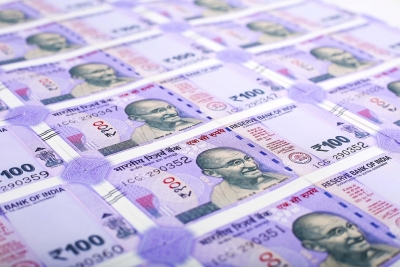By Subhash Narayan
New Delhi, Dec 24 (IANS) Oil sector public sector undertakings (PSUs) may have to bear a larger share of additional dividend payment to the government this year with almost all companies falling behind on their capex plan for the current fiscal.
As of November, the capex of PSU oil companies put together stands at Rs 46,303 crore, less than 50 per cent of the annual target of Rs 98,522 crore. The government has asked companies to complete at least 75 per cent of capex till the end of December quarter. But this looks highly unlikely now pushing the case for higher dividend payout.
In meetings with PSUs, Finance Minister Nirmala Sitharaman had stressed on the need for PSUs to step up investment during the time of the pandemic to boost overall sentiments and kickstart investment climate in the country. She had specifically urged companies to complete at least 75 per cent of capex target by December-end and more than 100 per cent by March.
“It is a double whammy for PSUs now. They have to cough up more either through investments or through payment of additional dividends. It should also be seen that the companies are finding it difficult to meet capex targets given financial and project implementation constraints. Covid has severely dented demand and slowed project implementation. Consequently, there is already a strain on their resources that would get heightened as additional dividend would have to be paid,” said a top official of a PSU, asking not to be named.
While almost all PSUs are facing delays and difficulties in stepping up the gas and increasing investments, the situation among companies in the oil and gas sector looks worse. Slow demand conditions in early part of the year resulted in slowing of several capex plans. Though the situation has improved from November onwards, still its a long way to go for normalcy to return in the sector.
For the government, oil sector PSUs are also set to make big inventory gains due to firming up of crude prices, and hence they are being looked at for higher interim dividend or special dividend and a few may also be considered for share buyback depending on market conditions.
Among the oil and gas PSUs, the worse performer in terms of capex spend is the country’s largest oil and gas explorer ONGC and largest public sector refiner Indian Oil Corporation. According to oil ministry’s Petroleum Planning and Analysis Cell (PPAC), while ONGC had completed just Rs 14,959 crore worth of capex upto November out of FY21 investment target of Rs 32,502 crore, IOC’s capex upto November is Rs 12,104 crore against annual target of Rs 26,233 crore.
Similarly, HPCL has completed capex of Rs 5,658 crore (upto November) against target of Rs 11,500 crore; Gail India – Rs 2,614 crore against annual target of Rs 5,412 crore; Oil India – Rs 2,136 crore vs Rs 3,877 crore target; MRPL – Rs 631 crore vs Rs 1,150 crore, OVL – Rs 3,765 crore vs Rs 7,235 crore.
Among the worst performer on capex is privatisation-bound Bharat Petroleum Corporation Ltd (BPCL) which has spent just Rs 3,716 crore against target of Rs 9,000 crore.
Officials sources said that PSUs with stock prices higher than the book value and who have sufficient cash funds may also be asked to shell higher dividend in FY21. A call will be taken after the third quarter results of companies are declared late January or early February next year.
With the central government being the largest shareholders in PSUs, higher dividend would largely help it to fill its coffers at a time when revenue is constrained due to a overall fall in economic activity during the pandemic while expenditure has risen sharply.
Dividend from non-financial PSUs have been budgeted at Rs 65,747 crore in FY21. Any increase in this will give a boost to non-tax revenue of the government and help its bridge the rising fiscal deficit that as per initial estimate is now pegged close to 8 per cent of GDP.
Finance Minister Nirmala Sitharaman and her predecessors, including the late Arun Jaitley and P. Chidambaram, had maintained the policy of advising non-financial state-owned companies that if they are not utilising their cash reserves for capex needs, they should give it to the Centre through dividends or share buybacks.
As per the guidelines issued by disinvestment department DIPAM, every CPSE is required to pay a minimum annual dividend of 30 per cent of PAT or 5 per cent of the net-worth, whichever is higher.
Apart from oil sector, several PSUs in power and mining space have completed just about 40 per cent annual capex by November due to constrained business environment.
(Subhash Narayan can be reached at [email protected])
–IANS
sn/kr

